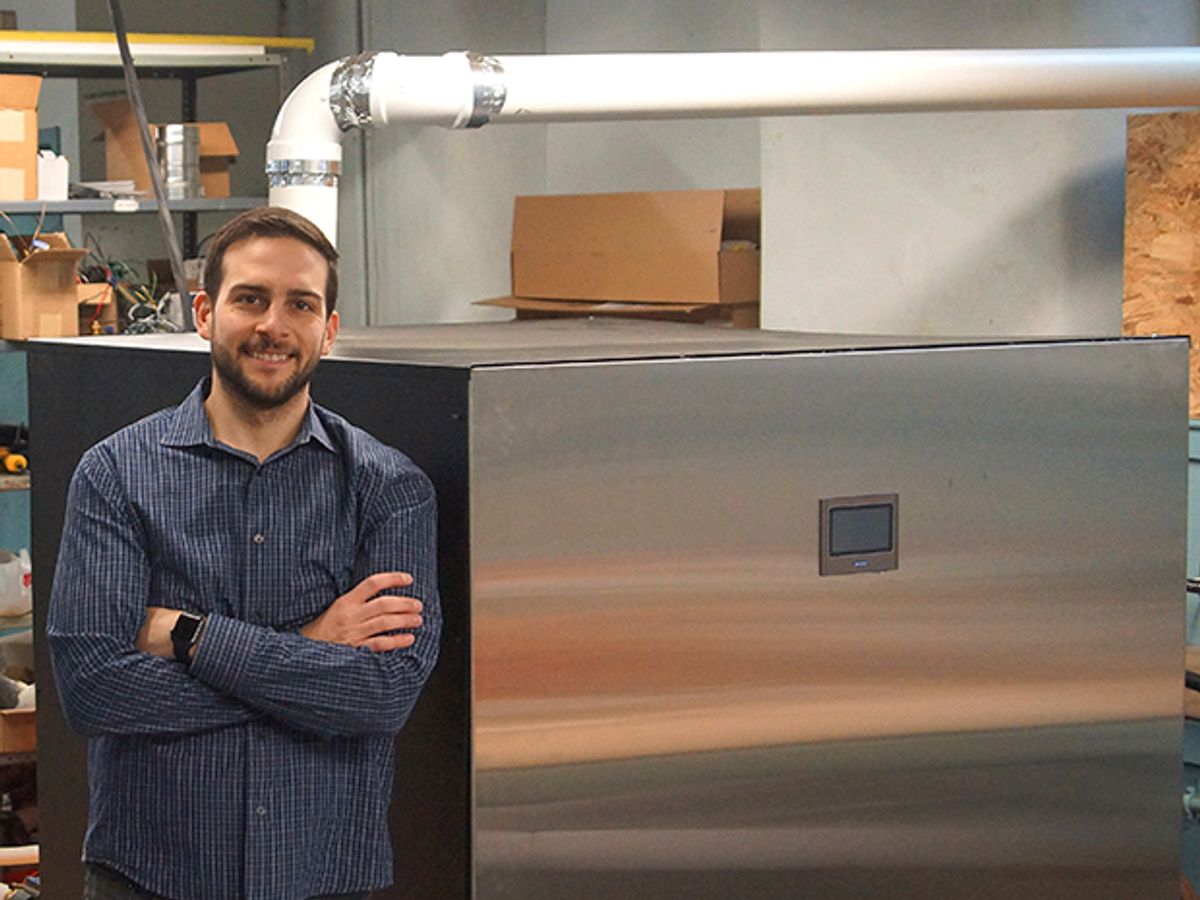Cogeneration, or combined heat and power (CHP), is the simultaneous production of electricity and useful heat. The global market for cogeneration equipment could hit US $43.8 billion by 2020, according to market research firm Global Industry Analysts. Cogeneration is often associated with large power plants in North America, and few there have modified the technology for small-scale commercial use. And nobody is selling a microcogeneration unit in the United States that is affordable enough for the average single-family house.
That’s where mechanical engineer Michael Cocuzza, founder and CEO of Enviro Power, hopes to break in. He got started by creating a prototype for his own home’s hot water boiler, capturing the steam generated by heating water to create electricity.
Enviro Power has a patent for a 10-kilowatt microcogeneration unit (mCHP) and is seeking financing to bring the product to market. Its mCHP uses a micro steam turbine, powered by propane or natural gas, to produce both heat and electricity. The company claims this cuts electricity consumption by up to 30 percent, reducing greenhouse gases and saving money. In addition, larger cogeneration units use an internal combustion engine that needs maintenance, while Cocuzza expects that a micro steam turbine engine will be maintenance free for 10 years.
On the strength of the energy savings demonstrated by his prototype, Cocuzza raised angel funding in 2015 that helped him set up in an incubator space. A graduate of the University of Connecticut, Cocuzza has staffed his company by hiring interns and employees recommended by UConn faculty and through the local startup ecosystem.
In partnership with a small municipal utility in Massachusetts, he plans to test his mCHP model in the “light commercial” market—apartment complexes, community swimming pools, nursing homes, and the like—in the early summer of 2017.
If it finds success there, Enviro Power plans to invest in making smaller units for residential customers. Initially these will be 5-kW units, but eventually the company hopes to bring 1.5-kW systems to market, which will be suitable for a standard 185-square-meter home.
“It’s a proven market in Asia; it’s growing in Europe,” Cocuzza says. “We’re at the very entry level of what appears to be a very large market.”
Enviro Power
Founded: 2013
Location: Mansfield Center, Conn.
Employees: 7
Total Funding to date: US $450,000
About half the homes in the United States are heated by natural gas, so the market potential is strong. Comparable units in Europe are selling for two or three times the cost of a standard hot water boiler; Cocuzza’s challenge is to be able to price his unit for significantly less. If Enviro Power can make the price low enough that one of its mCHPs will pay for itself through energy savings within three years, Cocuzza believes he’ll succeed.
Enviro Power has a few competitors. Marathon Engine Systems, in East Troy, Wisc., has sold nearly 100 of its 4.4-kW ecopower units in the United States and Canada, including one installed in a 540-square-meter home, according to Marathon. Yanmar, a Japanese company, is trying to expand into the U.S. market with its 5-kW and 10-kW internal combustion engine mCHP systems: The company says it is selling the 5-kW unit into multifamily housing and large single-family houses.
Mike Cocking, of consulting firm MicroCogen Partners, says market conditions are currently ideal because gas prices are low and electricity costs are rising. “The competition is pretty meager,” Cocking says. “On paper, [Enviro Power] measures very well.”
Cocking approves of Cocuzza’s plan to avoid direct residential sales for now: By starting with light commercial customers that need hot water all year, the return on investment is likely to be faster than in a single-family home. Worldwide, there are about 300,000 10-kW mCHP units in the market, but only 900 of them are in the United States, according to Cocking.
“It’s a clever idea,” Cocking says. “If he can make it viable, somebody will buy it.”
This article appears in the May 2017 print issue as “Profile: Enviro Power.”
